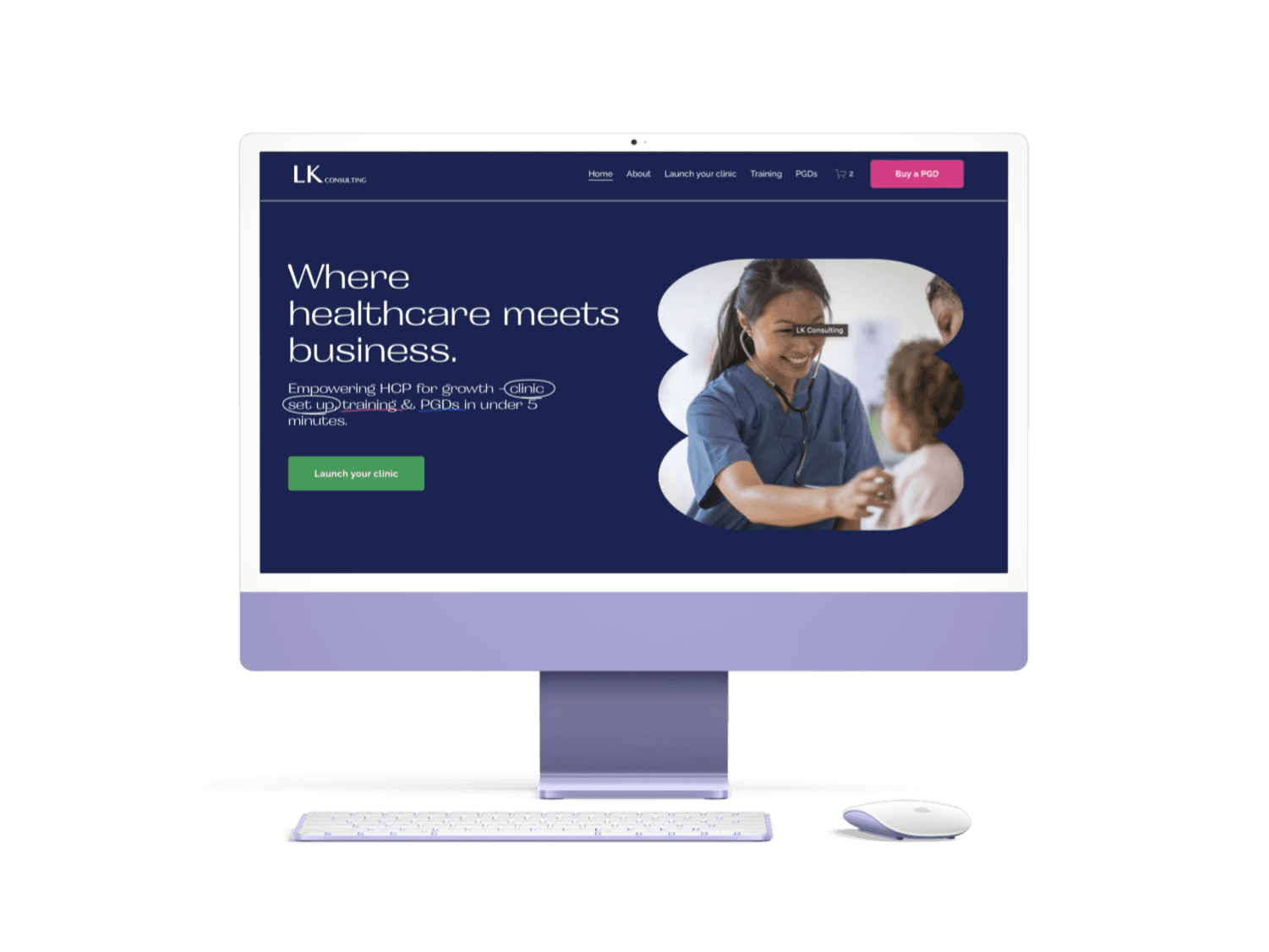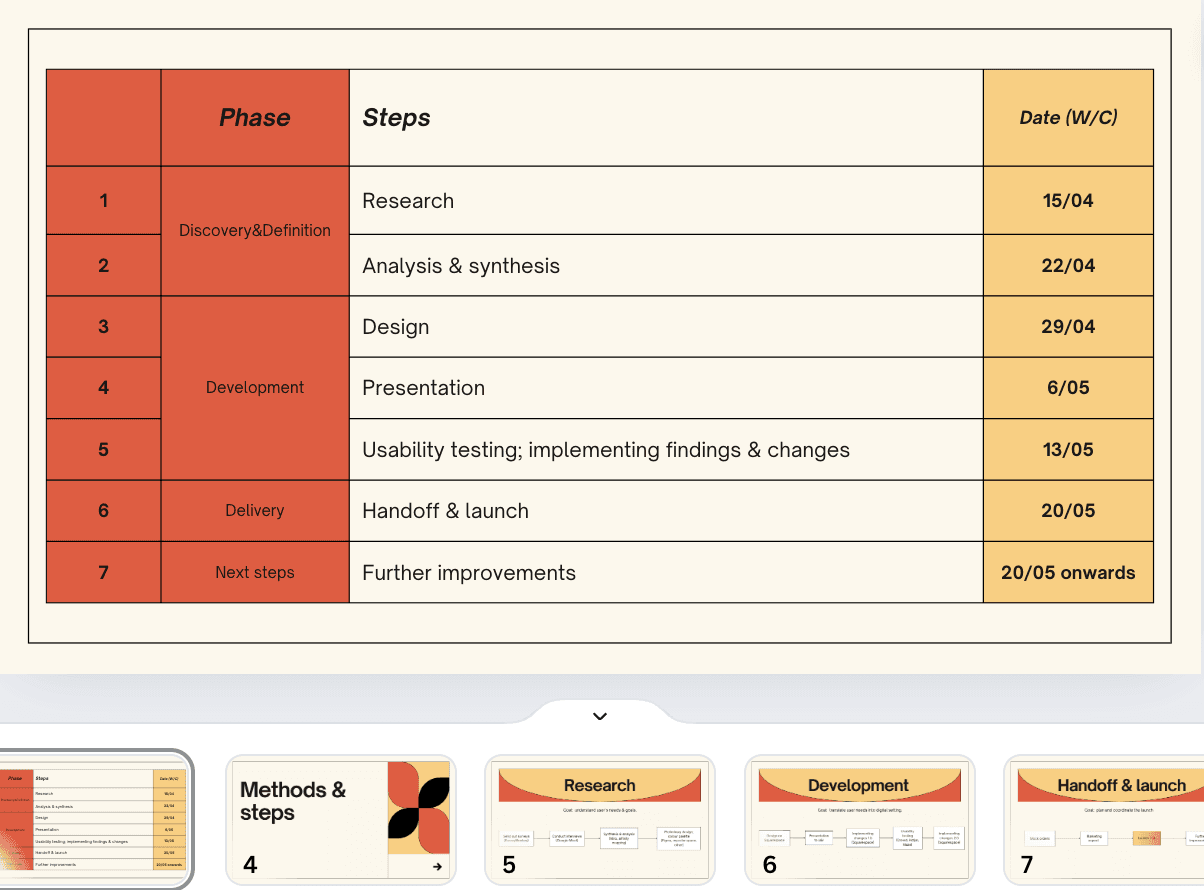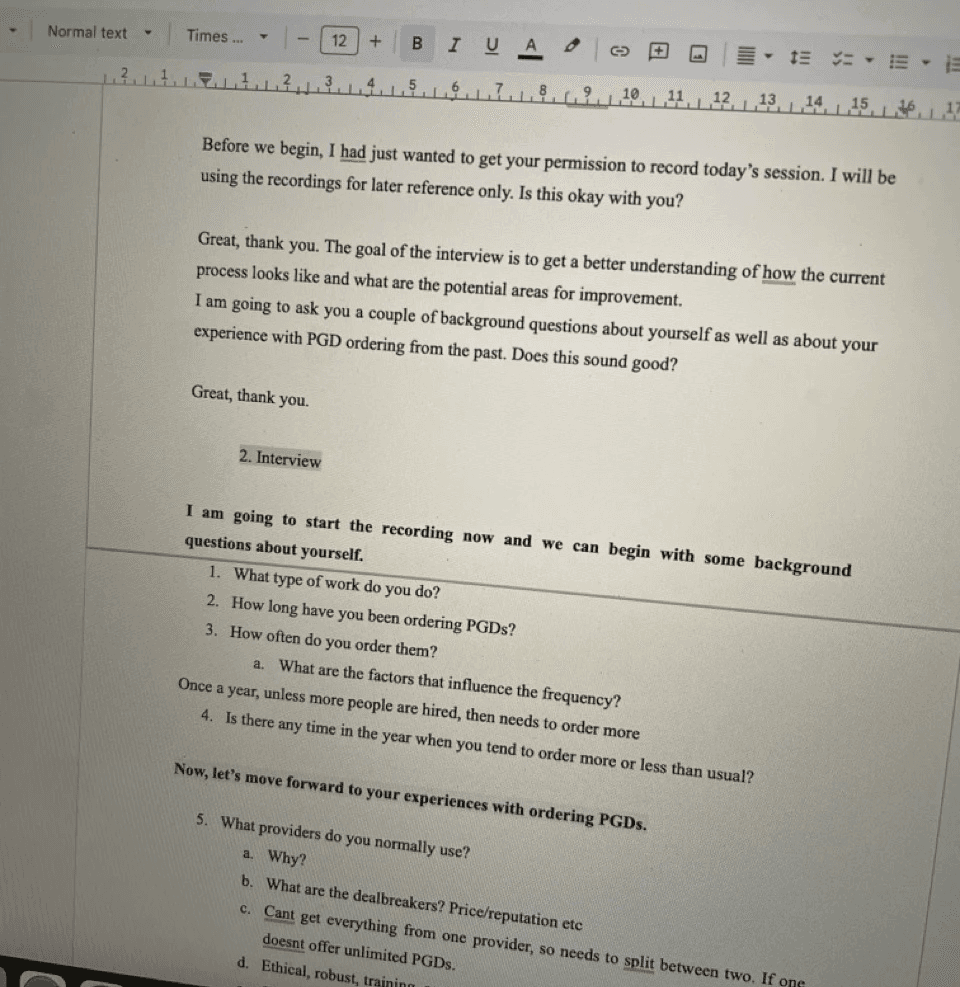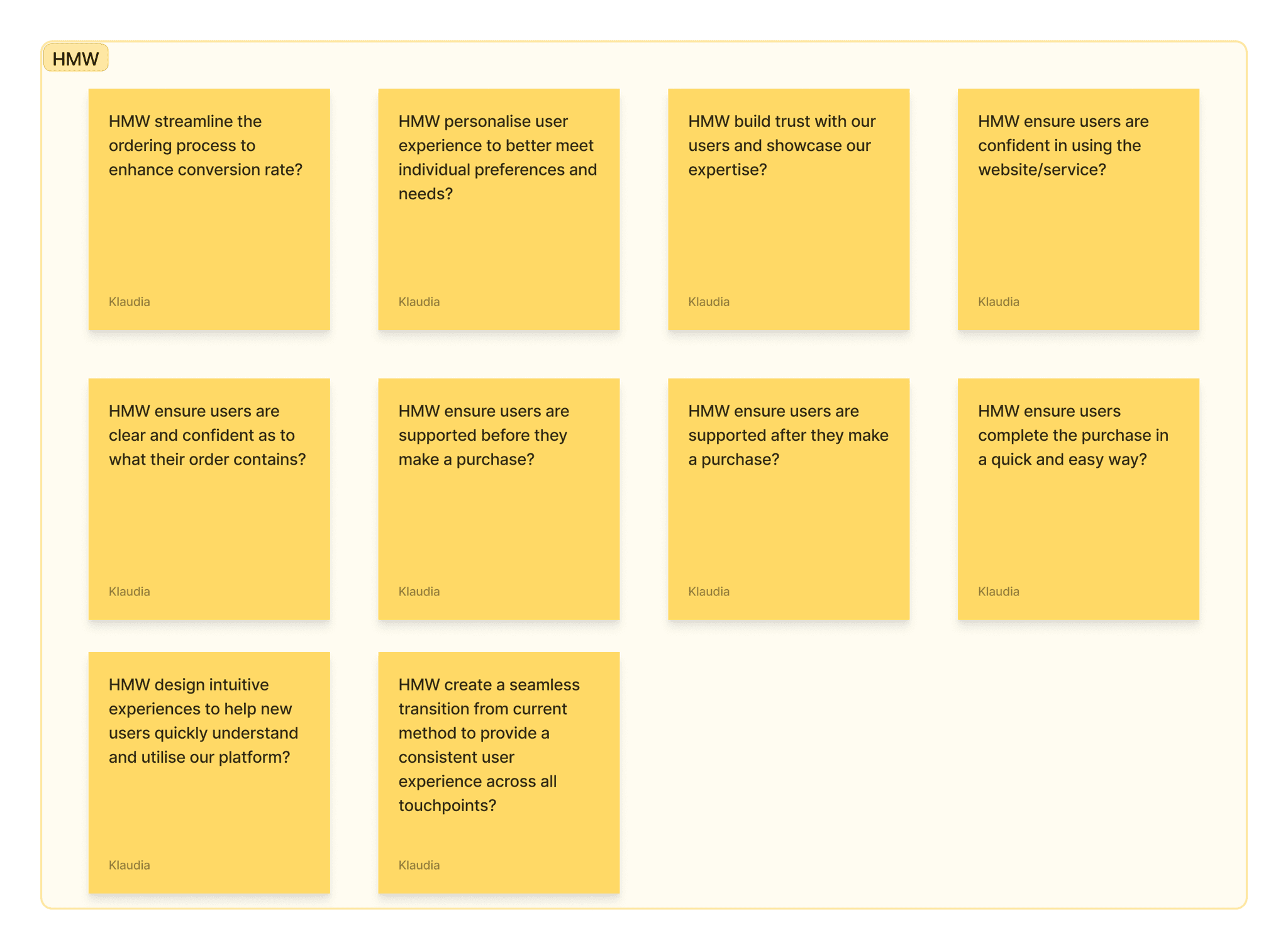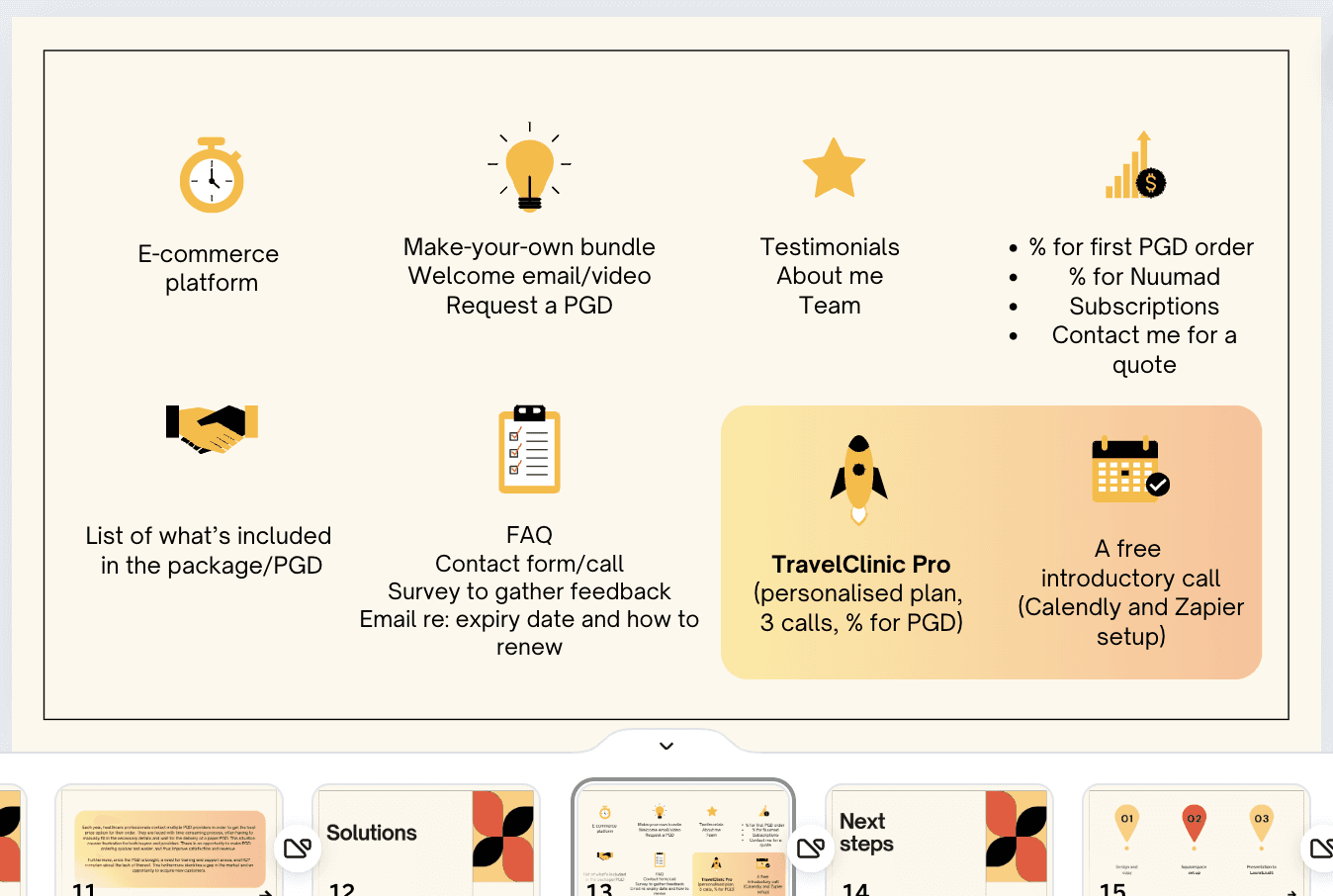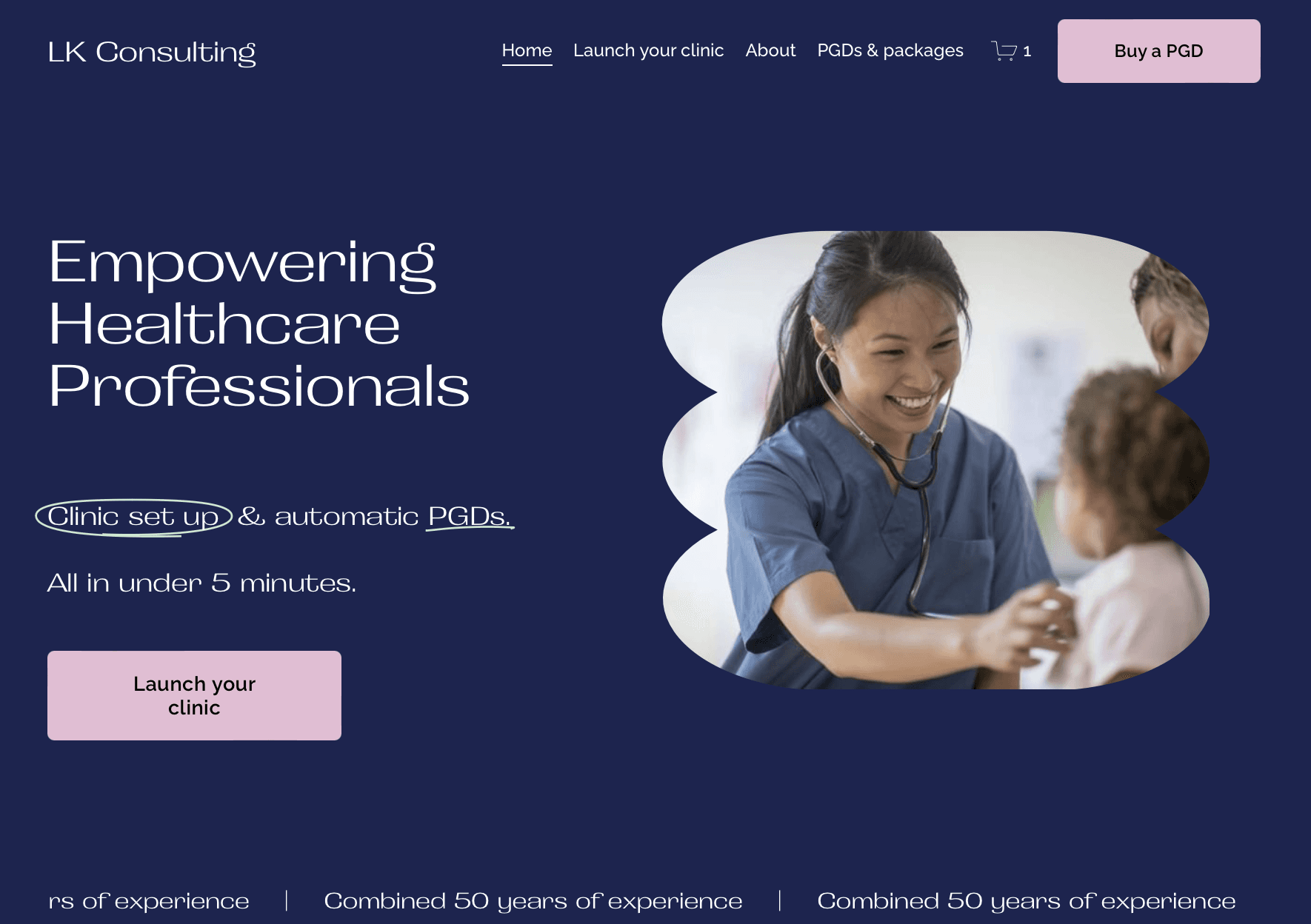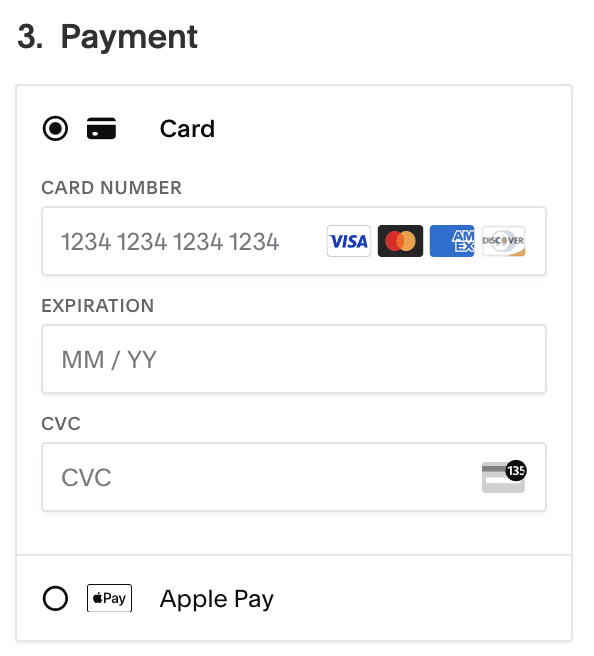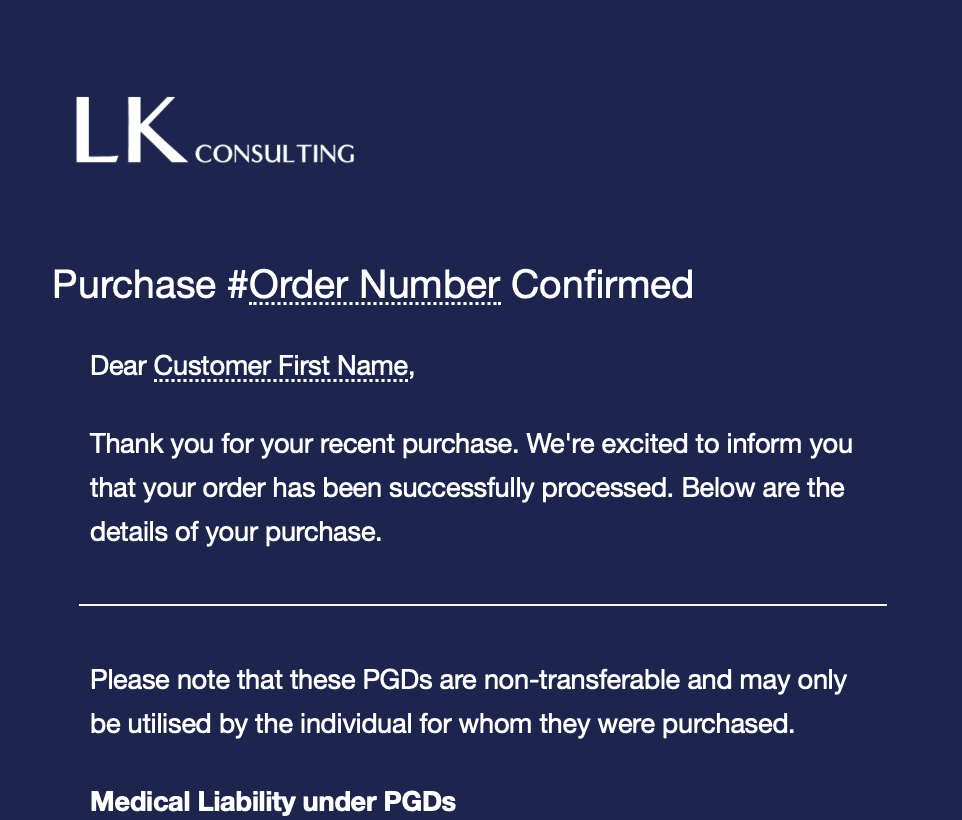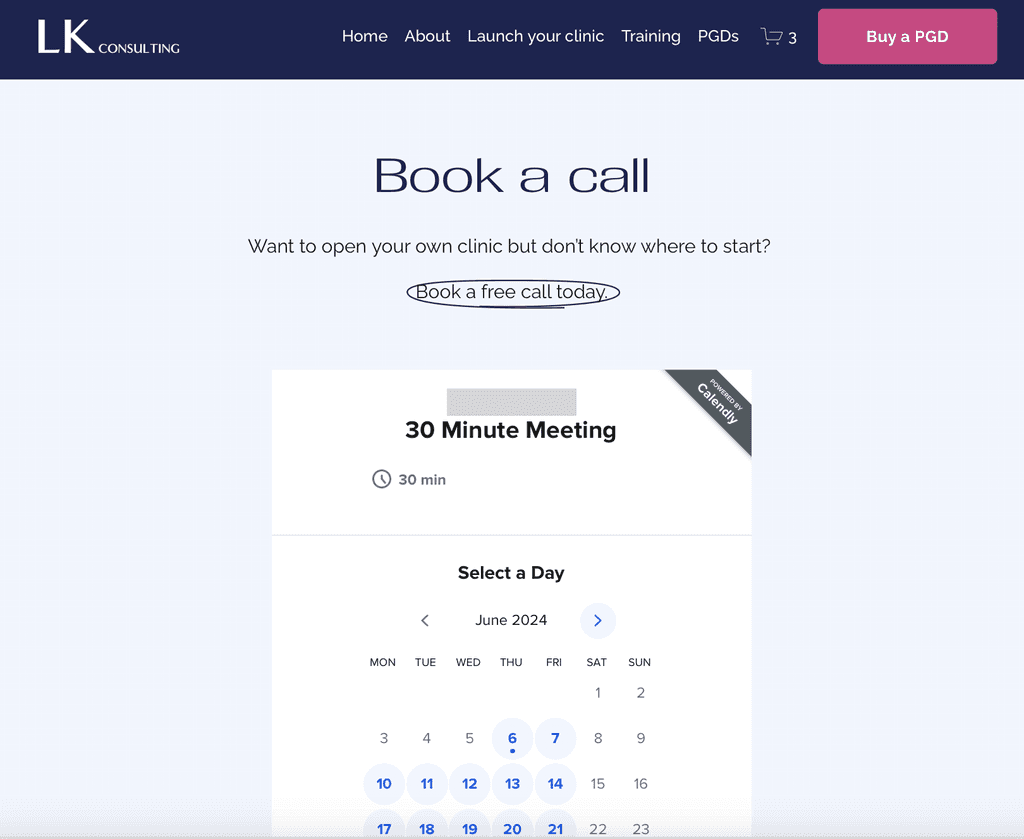NURSE'S TAKE
Serving as a nurse
Beth has recently become a registered nurse and wants to set up her own clinic to make healthcare more accessible and widespread.
She, however, feels unsupported and lost in the process, as there is little information as to how to go about the process.
She came across LK Consulting, but she didn't really understand what services were being offered.

"As a healthcare provider, my primary goal is to offer the best possible care to my patients. Lack of support and time spent on administration makes it difficult to adequately tend to need my help."
Discovery & Definition phase
Project goals
How to streamline the ordering process to enhance conversion rate?
How to design intuitive experiences to help new users quickly understand and utilise the platform?
Business objectives
Set up distribution channels to ensure the product and service reaches the target audience efficiently.
Establish relationships with early customers to foster loyalty and advocacy.
Acquire 20 customers within 6 months of market entry.
Stakeholder presentation
I presented my design approach stakeholders to ensure our vision aligned. I introduced business objectives, steps that will be taken within each stage of the double diamond and timeline.
I was able to use this to assign tasks for the upcoming weeks, such as the client providing necessary details for the product sale. We were able to have a discussion about how we can efficiently measure the success of the product.
Surveys
I used this method to gain general insights about the current offer on the market and what needs are not being met.
The decision I made based on this activity was what subjects to focus on during the interviews: pricing, dealbreakers, frequency of order, and current issues. I was also able to use the findings to structure the interview guide to gain more details about the identified subjects.
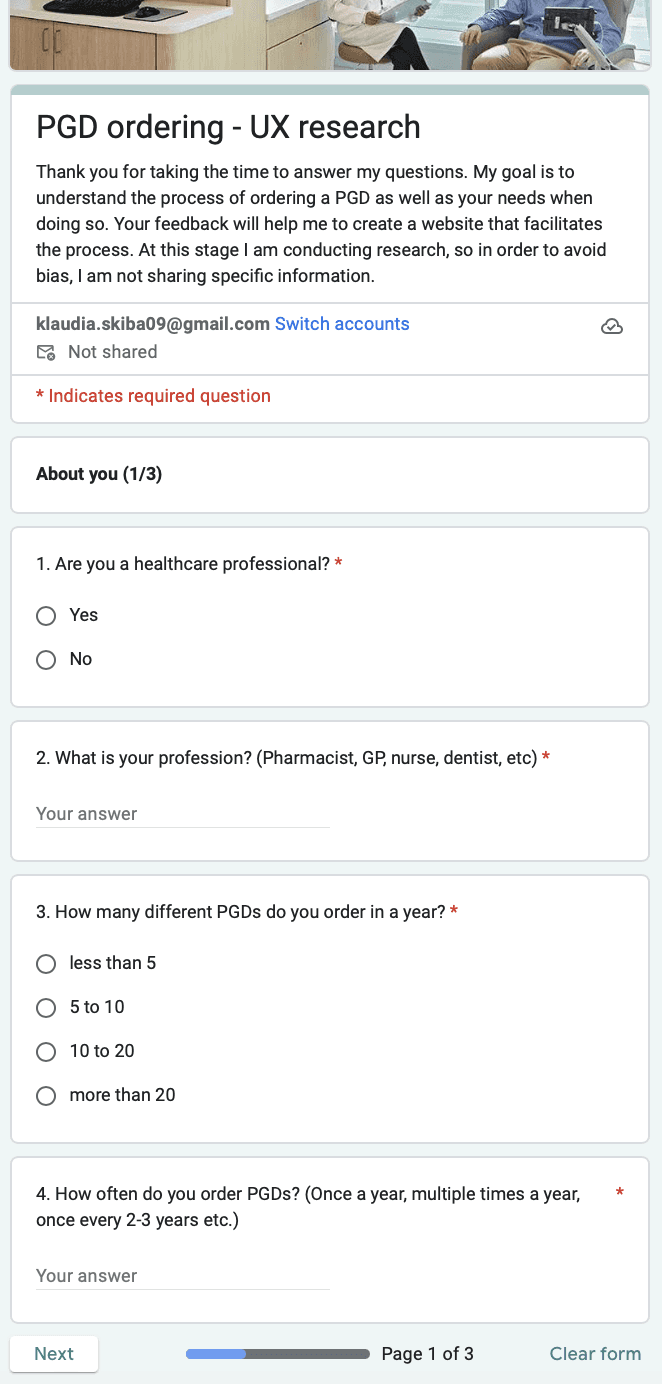
User interviews
I used this method to create an outline for the interviews, which provided me with focus and clarity.
I was able to investigate how users are feeling regarding the order process. This challenged my assumption that users might need a file storage feature, which wasn't the case. They did communicate the need for an e-PGD and a consultation platform combining multiple services.
Challenges
Integrating two main needs & problems.
It was clear that most of the users were interested in PGD orders only, however, some also communicated the need for support in setting up their own clinics. As users commmunicated that some providers forcibly try to sell commercial add-ons, the challenge was to avoid such an impression.
Analysis & synthesis
I was able to identify the most prevalent subjects and understand what users were struggling with.
Based on this activity I was able to come up with multiple ideas that would satisfy user needs. It also allowed me to consider technical constraints and ideate solutions within current capabilities.
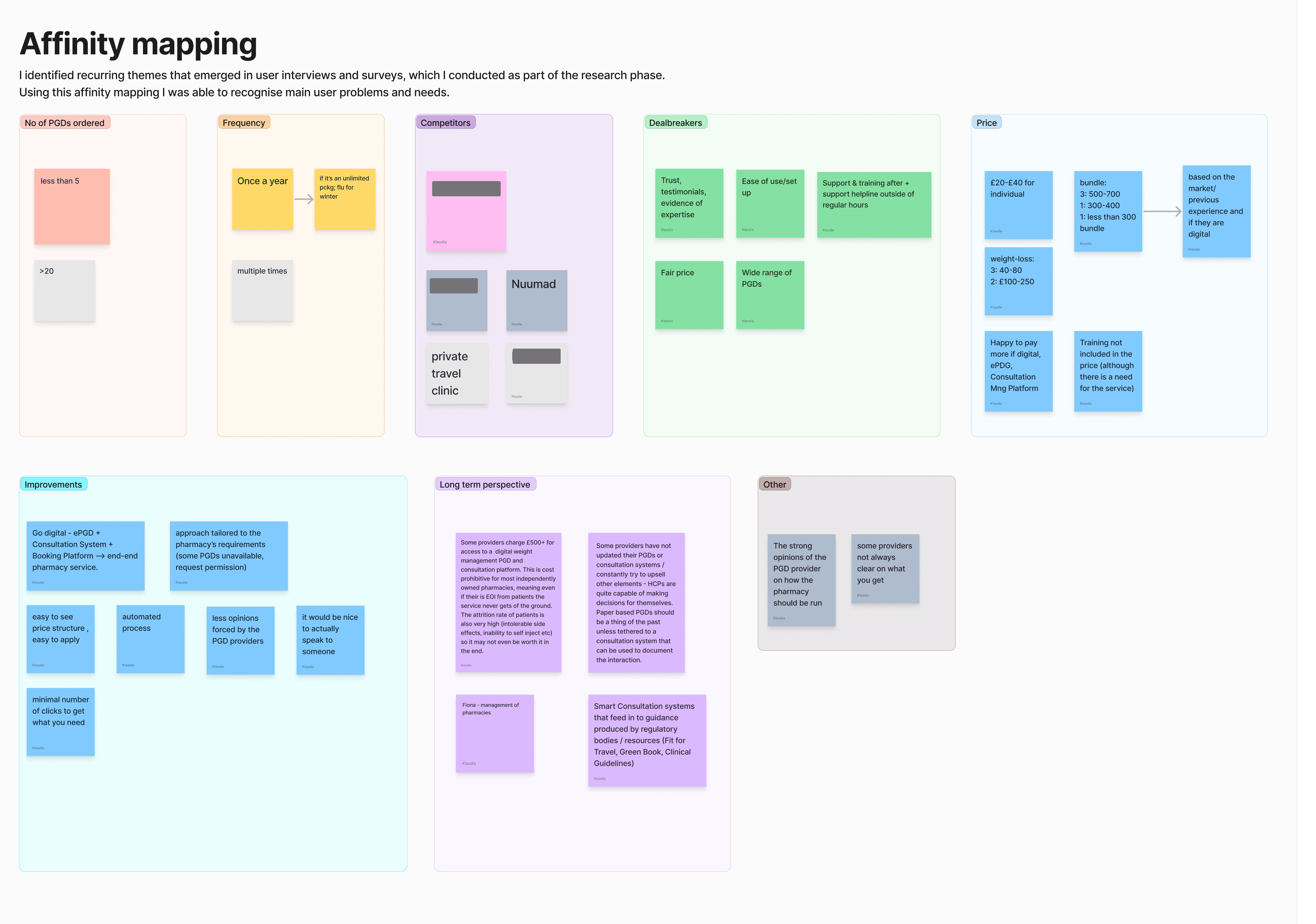
User needs & problems
I organised and clarified user needs and problems.
This activity helped me streamline the needs & problems and added clarity and structure to my proces.

Impact/Effort Matrix
I used this method to prioritise user problems according to their impact and effort required to deliver.
Based on this I was able to discard ideas we didn't have resources for.
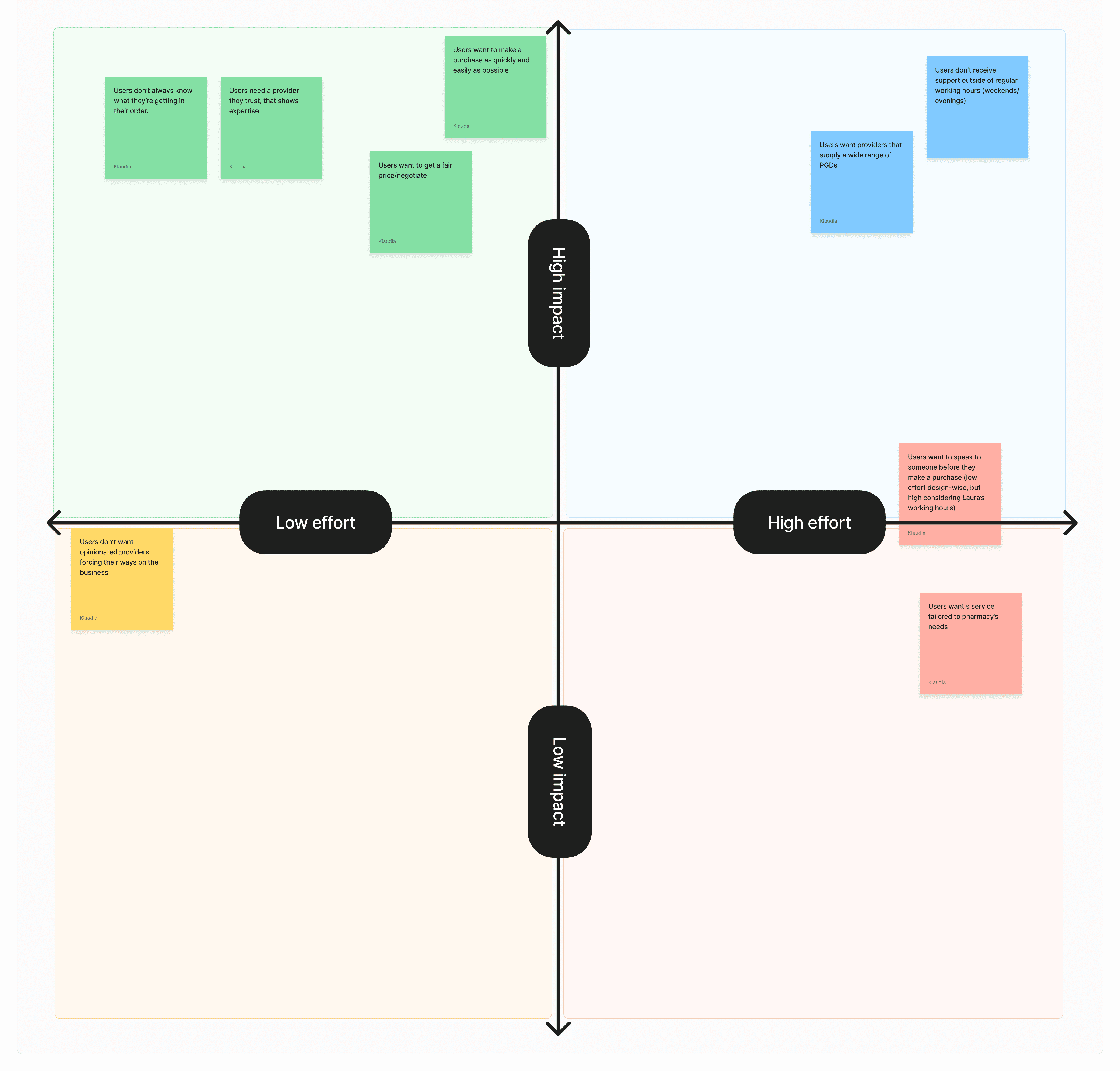
Problem statement
I used the 5 Ws method to define a problem statement in order to bring focus and direction to the definition stage of my process.
Having structured my problem statement, I was able to focus on two aspects of this project: steamlining the PGD order and structuring the LYC offer. I made the decision not to separate the products form each other, but rather combine the offer to an extent.
Problem statement
Each year, healthcare professionals contact multiple PGD providers in order to get the best price option for their order. They are faced with time-consuming process, often having to manually fill in the necessary details and wait for the delivery of a paper PGD. This situation causes frustration for both buyers and providers. There is an opportunity to make PGD ordering quicker and easier, and thus improve satisfaction and revenue.
Furthermore, once the PGD is bought, a need for training and support arises, and HCP complain about the lack of thereof. This furthermore identifies a gap in the market and an opportunity to acquire new customers.
Success metrics
I used success metrics as a quantitative way to measure the effectiveness of my designs. This allowed me to assess performance objectively and track improvements over time.
In alignment with project goals and business objectives, I decided to measure the following metrics:
Conversion rate at 50% for PGD orders
To measure this I'll use:
Hotjar
Customer acquisition
Acquire 20 customers within the initial phase of market entry.
To measure this I'll use:
Hotjar
Time-on-task
Reduce ToT for PGD orders.
Development phase
Round 1.
HMW questions
Based on the findings from the research phase, I created How-Might-We questions to receive actionable design opportunities in alignment with user needs & business objectives.
Having come up with HMW questions, I was able to see brainstorm ideas and solutions.
Ideation - Six Thinking Hats and Mind Mapping
I used the two techniques to encourage a comprehensive flow of ideas and identification of relationships between them.
I further used the MoSCoW method to discard the ideas that didn’t fully align with business objectives or required more advanced technical features available in Squarespace. This challenge allowed me think of alternatives and scale back considering technological capabilities and budget.
Stakeholder presentation
I presented my findings to ensure consensus on the design direction and maintain feedback loop.
I was able to use this time to answer questions and verify my findings. Having received feedback from my supervisor, I was able to discard ideas that wouldn't be feasible within Squarespace and planned budget.
Card sorting and sitemap
Next, in order to evaluate existing information architecture, I conducted card sorting sessions.
Based on this activity I was able to understand how users categorise content and create a sitemap. This will also assist in future product development.
Challenges
Technical constraints. Squarespace offers limited tools and this limited my possibilities.
I overcame this challenge by scaling down on some ideas, such as subscriptions. I planned to include it at the beginning, but decided to remove it as this would require upgrading the Squarespace plan, which the client didn't plan to do.
Limited budget.
This posed a challenge as I had to discard some solutions to fit within the current Squarespace plan. I decided to use Calendly for scheduling instead of Acuity as the first was free.
Round 2.
Low - fidelity wireframes
I used this method to transfer my sketches into a digital setting with more added details to evaluate visual hierarchy of content on the page.
By making designs tangible, I was able to evaluate where there was too much clutter or where content wasn’t structured well.
Design critique
I conducted a design critique and gathered feedback from stakeholders.
I was able to understand what aspects weren’t clear and self-explanatory to the user and implement necessary changes.
Round 3.
Squarespace design
I transferred low-fi designs to Squarespace to see it in an accurate setting.
The decisions I made based on this activity were:
- to change the nav and transfer some elements to the footer that didn’t need to be accessed straight away.
- to choose a colour palette that communicated professionalism, empathy and commitment; the challenge was to balance en established healthcare style with a touch of modernity.
UI review
I conducted another review on the design in Squarespace to see how the colours and typography worked together.
Based on this activity I decided to make changes in typography, as the body font wasn’t as easy to read. Furthermore, I improved consistency between LYC sections to reinforce recall and improve familiarity
Usability testing - findings & suggestions
H4 are difficult to read.
Increase line height.
Users clicked 'Add to card' button on "All products" page without having read Medical Liability information.
As this is crucial for legal reasons, I decided to remove the button to mitigate the risk of malpractice. The button will still remain in individual product pages.
Delivery phase
Why were my designs successful?
CLIENT'S TAKE

"I'm able to focus on training nurses instead of on sending endless emails and filling out forms. That's what matters."
Next steps
1.
Subscription add-on for long-term customers.
2.
Research accessibility and potential ways to improve it.
